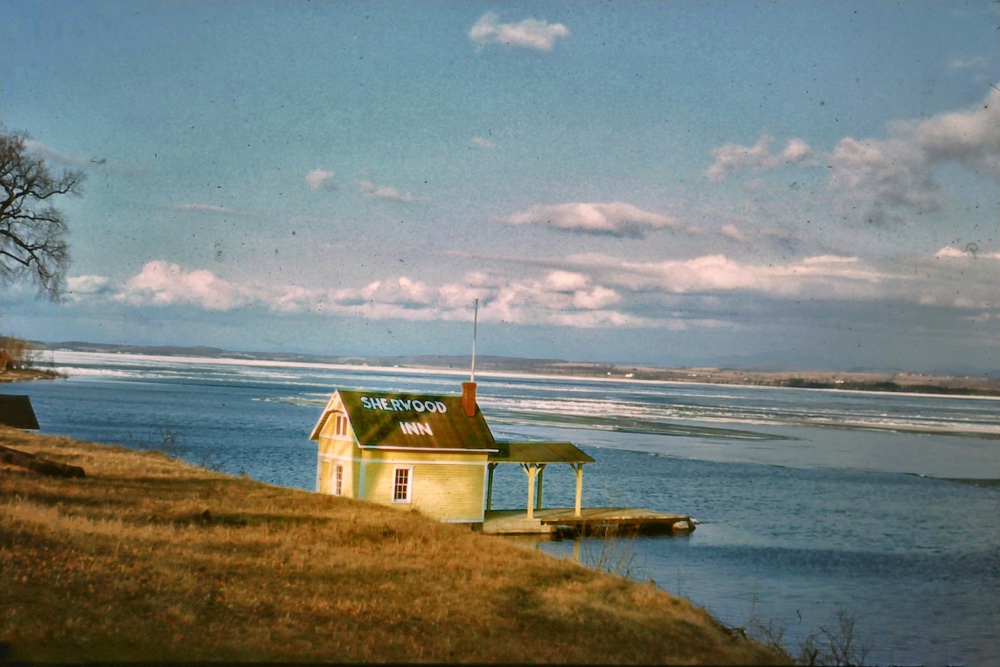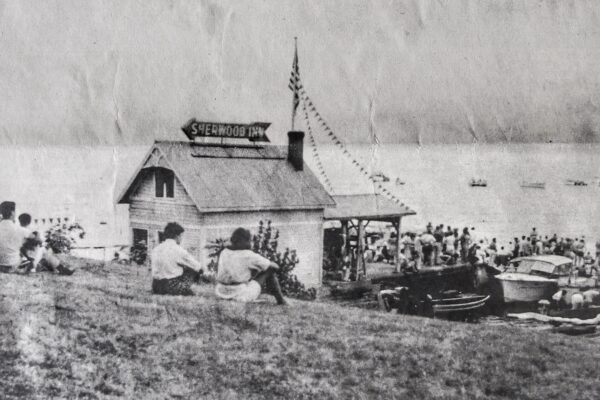I prologue today’s post with an unapologetic nota bene. I am biased in favor of trees and lakes and meadows. Not billboards. I favor mountains, valleys, and architecture. Not billboards. I enjoy wildlife, scenic vistas, and sunsets. Not billboards. Detecting a pattern? In short, my billboard bias ill equips me to respond enthusiastically to this morning’s Bloganuary prompt.
If you had a freeway billboard, what would it say?
Rather than dismiss this question, I’m compelled to address it somewhat obliquely, albeit in a manner consistent with my Adirondack roots.
And since two other thoughtful penners have summed up the words that I might have pulled out of the ether, today’s post will defer to both of them rather than reiterating and falling short. In other words, please consider this colloquial collage my response to the prompt above.

By way of introduction (and rhyming abstract), I pass the baton to Ogden Nash.
I think that I shall never see
— Ogden Nash, “Song of the Open Road” (Source: The New Yorker, October 15, 1932 via Quote Investigator®)
A billboard lovely as a tree.
Perhaps, unless the billboards fall,
I’ll never see a tree at all.
(Note: If you’re familiar with another version of this quotation and/or care to question the accreditation, click the source link. I’m not prepared to vouch for it, but it’s interesting.)
No sense decanting Nash’s couplets, right? Sometimes it takes a poet!

Blue Line Billboards
I referenced Adirondack roots above. Susan and I chose to live in the Adirondack Park when we purchased Rosslyn in 2006, but my backstory dates to the mid 1970s. Although I was born in New York City, I grew up within the Blue Line. (IYKYK.)
In other words, my billboard bias undoubtedly derives, at least in part, from growing up in the Adirondacks. And, as it turns out, Peter Bauer (Executive Director of Protect the Adirondacks) adeptly and succinctly summed up what I’d care to share in his September 22, 2013 article in The Adirondack Almanack tellingly titled, “Homage to the 1924 Sign Law”.
I’ll quote liberally à la collage mentioned above rather than doing the disservice of interpreting and reiterating. And I will fast forward to specifics about the 1924 sign law, and then circle back to his introductory observations.
Here’s the relevant text of the law, which stands remarkably unchanged after all these years, from section 9-0305 of the Environmental Conservation Law, entitled “Signs and advertising in Adirondack and Catskill parks”:
In order to conserve the natural beauty of the Adirondack and Catskill parks, to preserve and regulate the said parks for public use for the resort of the public for recreation, pleasure, air, light and enjoyment, to keep them open, safe, clean, and in good order for the welfare of society, and to protect and conserve the investment of the state in forest lands, campsites and other interests in real property in said parks, no person shall erect or maintain within the boundaries thereof any advertising sign, advertising structure or device of any kind, except under written permit from the department. The provisions of this section shall not apply to signs erected or maintained upon a parcel of real property in connection with the principal business or principal businesses conducted thereon and which advertise such business or businesses only, or to signs within the limits of an incorporated village.
— Peter Bauer, “Homage to the 1924 Sign Law” (Source: The Adirondack Almanack, September 22, 2013)
In short, (almost) no billboards within the Blue Line, making the Adirondack park, a safehaven for those of us with an unabashed billboard bias.
The 1924 law, signed by Governor Al Smith (who also purchased the summit of Mount Marcy), was one of the first acts that sought to integrate the private lands of the Adirondacks with the public Forest Preserve lands. The Adirondack Park was created in 1892 and the Forest Preserve made forever wild in 1894, and reaffirmed importantly in 1915. Yet the 1924 sign law was the only effort that sought to connect public and private lands in the Adirondack Park until 1968 when Governor Rockefeller appointed the Temporary Commission on the Future of the Adirondacks, which led to the passage of the Adirondack Park Agency Act in 1972.
— Peter Bauer, “Homage to the 1924 Sign Law” (Source: The Adirondack Almanack, September 22, 2013)
While the 1972 Adirondack Park Agency act is inextricably braided into my personal backstory, I’ll sidestep that segue for another day.
Instead, let’s stick with Bauer’s interest in associating private and public lands in service of preserving the Adirondack Park’s uniquely scenic landscape sans obstructive signage.
The law demonstrates an early recognition that the Adirondack Park was a special landscape in New York, a landscape well worth preserving for its scenic and aesthetic qualities. It also showed that we could take special actions to manage that special landscape.
— Peter Bauer, “Homage to the 1924 Sign Law” (Source: The Adirondack Almanack, September 22, 2013)
Bauer acknowledges that the 1924 sign law has preserved the remarkable viewscape we’re able to appreciate today, by and large unobstructed “by advertising of every size and shape imaginable.”
Bravo, Adirondack Park Agency. And bravo, Peter Bauer, for resurfacing and celebrating this remarkable accomplishment that endures half a century later.
Long story short, I would not have a freeway billboard. But if by some mysterious twist of fate (remember quirky kismet…) I did wind up with a freeway billboard, I would likely showcase the words of Ogden Nash.
I think that I shall never see
— Ogden Nash, “Song of the Open Road” (Source: The New Yorker, October 15, 1932 via Quote Investigator®)
A billboard lovely as a tree.
Perhaps, unless the billboards fall,
I’ll never see a tree at all.
Leave a Reply